| Bez-MX | |
|---|---|
 | |
| Publisher(s) | Bez |
| Platform(s) | Apple II |
| Release | 1981 |
Bez-MX is a 1981 video game published by Bez for the Apple II.
| Bez-MX | |
|---|---|
 | |
| Publisher(s) | Bez |
| Platform(s) | Apple II |
| Release | 1981 |
Bez-MX is a 1981 video game published by Bez for the Apple II.
Bez-MX is a game in which two players attack each other with missiles and bombers in a hybrid of strategy and arcade game. [1]
John Besnard designed the game based on actual defense projects authorized by President Ronald Reagan, with a release date of December 1981. [2]
David Hunter reviewed the game for Softalk and said that while the winner is determined by their score, "a low score does not necessarily indicate a badly played game" because he found it "easy to rack up points bombing cities and farms" while destroying "more crucial things like the runway and factory are what help you win the game." [3]
Luther Shaw reviewed the game for Computer Gaming World , and stated that a "pure arcadist" may not enjoy Bez-MX but players who enjoy strategy games "with a little arcade flavor" may find the game "worth considering" based on its price. [1]

Asteroids is a space-themed multidirectional shooter arcade video game designed by Lyle Rains and Ed Logg released in November 1979 by Atari, Inc. The player controls a single spaceship in an asteroid field which is periodically traversed by flying saucers. The object of the game is to shoot and destroy the asteroids and saucers, while not colliding with either, or being hit by the saucers' counter-fire. The game becomes harder as the number of asteroids increases.

Kaboom! is an action video game published in 1981 by Activision for the Atari 2600. The game involves a Mad Bomber dropping bombs at increasing speeds as a player controls a set of water buckets to catch them. The gameplay was based on the Atari arcade video game Avalanche (1978). Kaboom! was programmed by Larry Kaplan with David Crane coding the graphics for the buckets and Mad Bomber. It was the last game designed by Kaplan for Activision, who left the company shortly after the release of the game. The game was later ported by Paul Wilson for the Atari 5200 system.

Super Invader is a fixed shooter video game written by Japanese programmer M. Hata for the Apple II and published by Creative Computing Software in November 1979. Super Invader is a clone of Space Invaders.
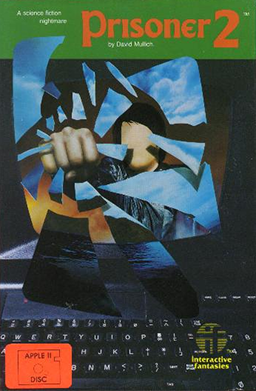
The Prisoner 2 is a video game published in 1982 by Edu-Ware. It is a remake of the 1980 game The Prisoner.
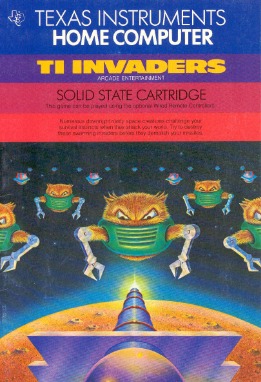
TI Invaders is a fixed shooter video game published by Texas Instruments in 1981 for the TI-99/4A home computer. The game is a Space Invaders clone where the goal is to shoot all of the aliens before they reach the bottom of the screen. TI Invaders is part of the TI Arcade Game Series which includes Tombstone City: 21st Century and Car Wars.

Epidemic! is a turn-based strategy game in which the player stands in control of a world on the brink of extinction. It was developed by Steven Faber for the Apple II and published by Strategic Simulations in 1982. It was ported to Atari 8-bit computers.
California Pacific Computer Co. was a computer software and game publisher active from 1979 to 1986, founded in Davis, California by Alvin Remmers. Its software was published exclusively for the Apple II computer and was an early commercial outlet for several important game designers including Richard Garriott, Bill Budge, and Michael Pondsmith.

Gumball is a video game written for the Apple II by Veda Hlubinka-Cook and published by Broderbund in 1983. It was ported to the Atari 8-bit computers, and Commodore 64. The player controls the valves of a maze-like machine to sort gumballs by color.
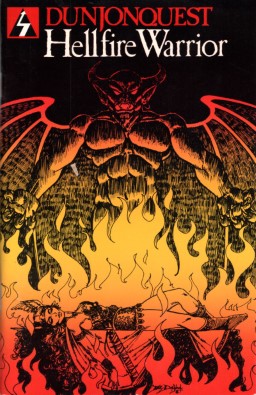
Hellfire Warrior is a dungeon crawl video game for the Apple II, Commodore PET, and TRS-80 published by Automated Simulations in 1980. A port to Atari 8-bit computers was released in 1982. Hellfire Warrior is the direct sequel to 1979's Temple of Apshai. Two expansion packs were published.

Epoch is a space combat simulator for the Apple II written by Larry Miller and published by Sirius Software in 1981.

Adventure in Time is a text adventure written by Paul Berker for the Apple II. It was published in 1981 by Phoenix Software, followed by a version for Atari 8-bit computers in 1983.
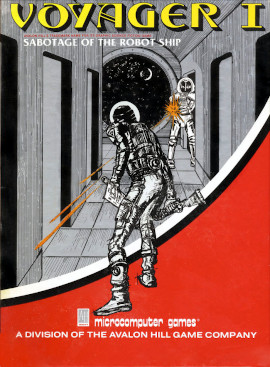
Voyager I: Sabotage of the Robot Ship is a computer game designed and programmed by William D. Volk, and published by the Microcomputer Games division of Avalon Hill. It was originally released for the Apple II in 1981, with later versions for the Atari 8-bit computers, TRS-80 Color Computer, TRS-80, and Commodore PET.

Night Mission Pinball is a pinball simulation video game published by Sublogic in 1982. It was developed by Bruce Artwick for the Apple II, then ported to the Atari 8-bit computers, Commodore 64, and IBM PC.

Red Alert is an Apple II shoot 'em up written by Olaf Lubeck and published by Broderbund in 1981.

The Battle of Shiloh is a 1981 computer wargame published by Strategic Simulations. It is one of the first Civil War strategy computer games, and was the first Strategic Simulations game available on the TRS-80. Intended as an introductory war game, it was available on the Commodore 64, Apple II, and Atari 8-bit computers, TRS-80, and IBM PC, and was originally developed by David Landry and Chuck Kroegel through their studio "Tactical Design Group".
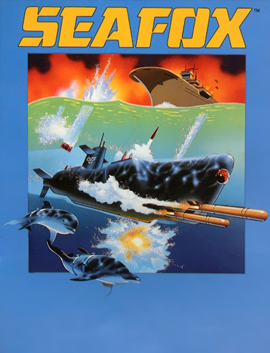
Seafox is a shoot 'em up written by Ed Hobbs and published by Broderbund in 1982 for the Apple II and as a cartridge for Atari 8-bit computers. A VIC-20 port, also on cartridge, was released in 1983.
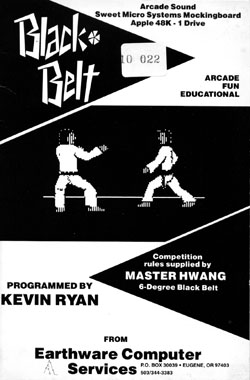
Black Belt is a 1984 video game published by Earthware Computer Services for the Apple II and Commodore 64. A taekwondo simulator, this title allows a player to spar with another human or computer opponent while strictly adhering to the rules of the sport including scoring and penalties. Black Belt is the fourth game from Earthware and the second programmed by Kevin Ryan for the company. The game was released as an educational supplement to real life taekwondo training.

Aquatron is a horizontally scrolling shooter written by Justin Gray and published by Sierra On-Line for the Apple II and Atari 8-bit computers in 1983. Aquatron's gameplay is inspired by the 1981 arcade game, Defender.
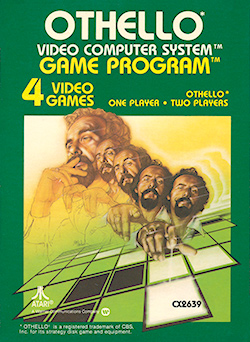
Othello is a 1980 video game developed and published by Atari, Inc. for its Atari Video Computer System. It is based on the variant of Reversi of the same name, originally created in 1971. The VCS game was programmed by Ed Logg and Carol Shaw.